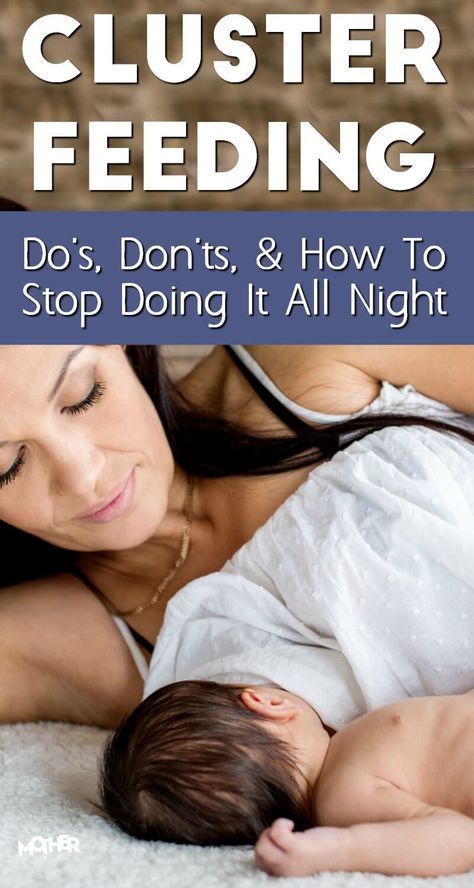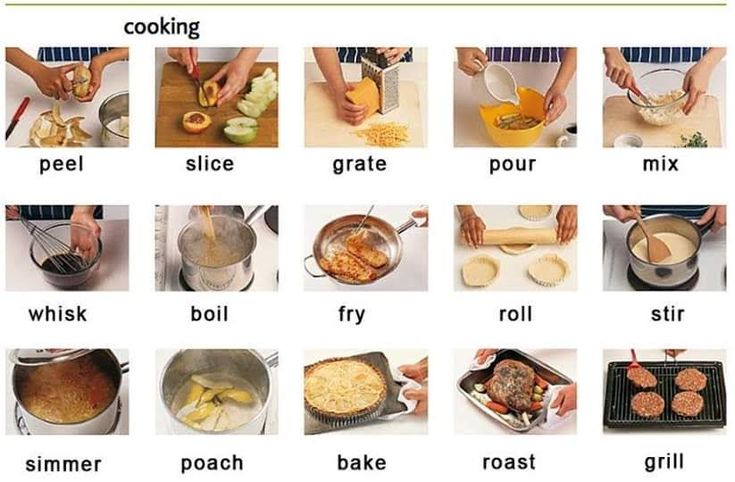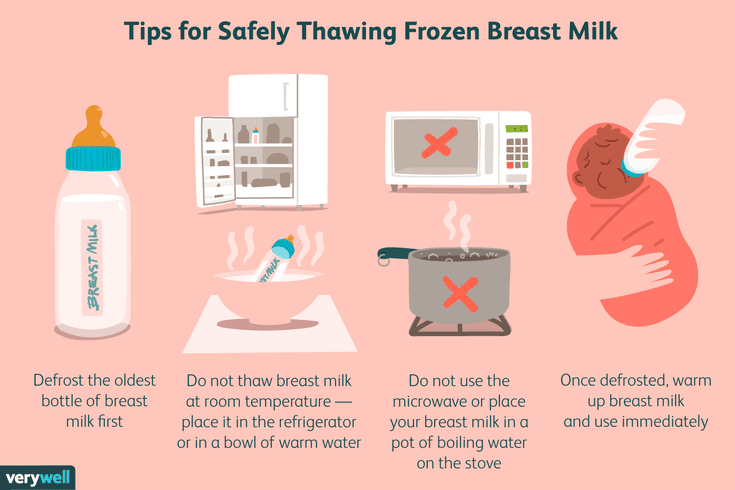Baby food strainer pacifier
Ultimate Guide to Baby Feeders: Mesh and Silicone
You may have seen baby feeders, whether mesh or silicone, and wondered what they are for. They are a great tool for feeding babies and toddlers—and are especially awesome for teething relief. There are many on the market though, so today I’m sharing the best of the best.
Baby Feeder
A baby feeder is made up of an easy-hold handle and a little pouch with lots of holes. The idea is that the holes allow some of the flavor and texture of the food to come out, without the concerns that may come with larger pieces of food.
This means you can worry less when it comes to choking risks.
One thing to keep in mind: They don’t allow babies to have the full texture experience of the food—since the texture is mostly the mesh of the feeder. That means you don’t want to use one of these for every meal (or even most meals).
Lots of exposures to lots of textures helps babies and toddlers gain confidence in handling all sorts of foods, which can make feeding kids a lot easier over the long run.
But an infant feeder can be a handy tool to have in the mix, especially if on the go, starting to transition to baby food, or trying out a new food that has you a little nervous.
And they are a great way to offer cold teething relief to soothe baby’s gums.
Baby Fruit Feeder
Many people like to use baby feeders to offer fruit, either fresh or frozen, since the product is a safe way for baby to suck on and explore the flavor of a wide range of fruit.
TIP: Another name for this is Baby Fruit Pacifier.
Best Baby Food Feeders
Below are my top picks for infant feeders chosen for ease of use, durability, and ease of care (as in washing!). There are different materials listed, as well as specific information on each product.
Best Mesh Feeder
Munchkin Baby Feeder, sold in a set of two. (Or choose the ones that come with travel caps.)
This baby feeder has a streamlined, simple design of a mesh bag for the food and a ring for baby to hold onto. Small, digestible pieces of food come through so baby is getting some nourishment (and comfort if using for teething) without the risk of choking. It’s about $7 for two of them.
Small, digestible pieces of food come through so baby is getting some nourishment (and comfort if using for teething) without the risk of choking. It’s about $7 for two of them.
Best Silicone Feeder
Boon Silicone Feeder
This baby feeder, which is priced at under $6, is made from durable silicone and can be used with fresh or frozen foods. The interior stem forces food toward the tiny holes in the feeder and the small handle is sized just right for baby’s little hands.
Kidsme Baby FeederBaby Feeder Pacifier Combo
Kidsme Food Feeder
This popular Kidsme feeder has a replaceable silicone pouch that comes in two sizes, so you can adjust and replace as your child grows. It has a unique handle style that some babies may prefer and can be used as a pacifier too. It’s usually priced around $15 and is recommended for ages 4-24 months.
What baby foods should I put into a baby feeder?
Here are some fruits that are good to serve in a baby feeder:
- Raspberries, fresh or frozen
- Strawberries, fresh or frozen
- Blackberries, fresh or frozen
- Cantaloupe
- Honeydew
- Banana
- Mango, fresh or frozen
- Roasted sweet potato
- Roasted butternut squash
- Ripe fresh pear
- Fresh cucumber, skin removed
- Watermelon
- Cooked red meat such as steak
- Frozen grapes (These are NOT safe served to a child this age in any other way as they are a choking risk.
 They are fine served inside the feeder, though.)
They are fine served inside the feeder, though.)
TIP: You can use frozen fruit or ripe fresh fruit that’s soft and easy to gum. Avoid any fruits or veggies that are very hard as baby may be frustrated by that texture.
Frequently Asked Questions
What age can baby use a mesh feeder?
Babies can use an infant feeder soon after starting solids around 6 months, or when they can easily hold it and bring it to their mouth.
How do I use a baby feeder to help with teething?
If you fill the feeder, whether mesh or silicone, with frozen fruit, you can soothe teething in infants who are eating solids or in toddlers. It’s cold and yummy, yet requires no real work for the child to suck on, so it’s comforting.
Are all of these baby feeders BPA-free?
Yes, if you choose a mesh baby feeder or one made from silicone, they are BPA-free.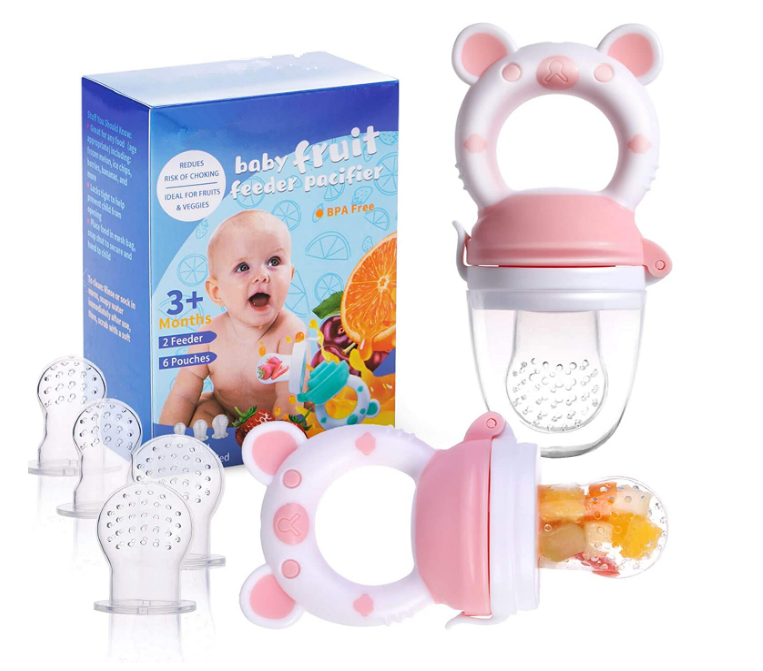
What’s the best way to clean a baby feeder?
Try using a bottle brush or just running water to clean out the mesh. It should be fairly easy to clean if you avoid letting it sit too long with food in it!
Are baby feeders good for babies?
The one downside could be that if you rely on them too much, the child learns the texture of the feeder, rather than of the food. This can make it harder for a child to learn to move actual food around in their mouths and harder for them to accept a range of textures in the future when you don’t want to be using the mesh feeder as much.
Because of that, I recommend using this product at limited times such as when on the go at a restaurant or to help sooth a teething infant, baby, or toddler.
This is not recommended as a way to feed your child at every meal.
If you are worried about choking, review this information on toddler choking and trust that if you serve foods that are easy to squish between your fingers, baby is sitting down at meals, and you are with them, they will learn to eat like so many other kids who have gone before them!
You May Also Like
- Best Baby Puffs
- Favorite Sippy Cups
- Best Snack Containers
- Best Lunch Boxes
- Favorite Suction Bowls
- Top High Chairs
I’d love to hear your thoughts on baby feeders in general or on these specific products, so please comment below to share!
This post was first published May 2019.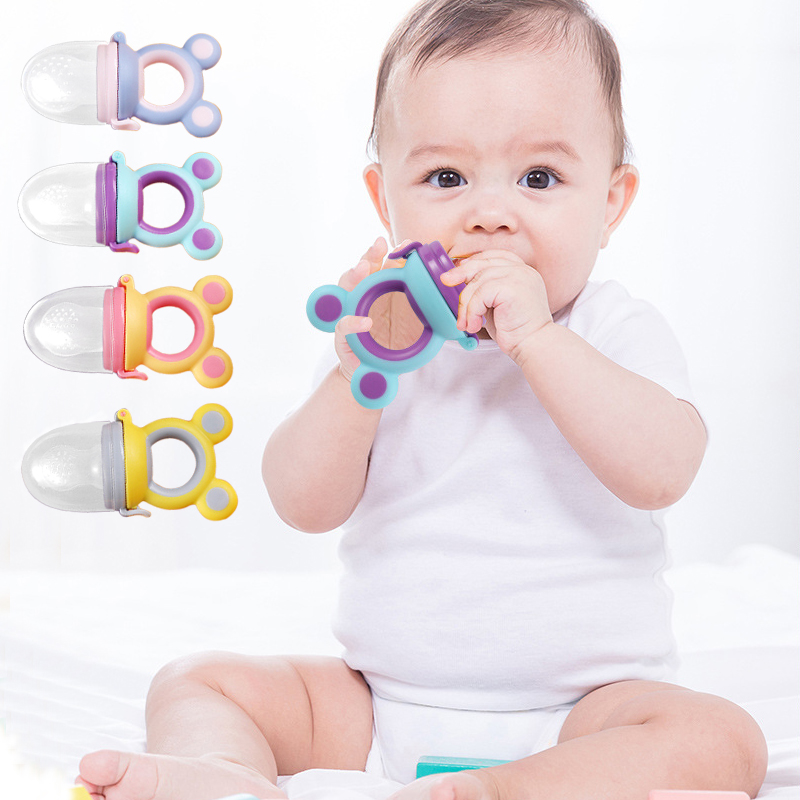
A Guide to Using Baby Fruit Feeder Pacifiers
Starting solids is an exciting time for you and your baby. It is one of the milestones in their development and your parenting. There are so many choices to make regarding which foods to give and how to feed them, but the one thing that can make the process a little easier is a baby fruit feeder pacifier.
In this post, we’ll share tips on using a baby fruit feeder pacifier, the benefits of using one, and the characteristics of the best one. So, whether you’re just starting your baby on solids or are looking for new ways to get your baby interested in food, read on for our full guide!
Benefits of Using a Fruit Feeder PacifierThere are various ways to introduce solids to your little one. You can let them rely on you through spoon feeding or allow them to enjoy soft baby food and biscuits using their hands. You can utilize different baby utensils like baby spoons and forks, suction bowls and plates, and sippy cups.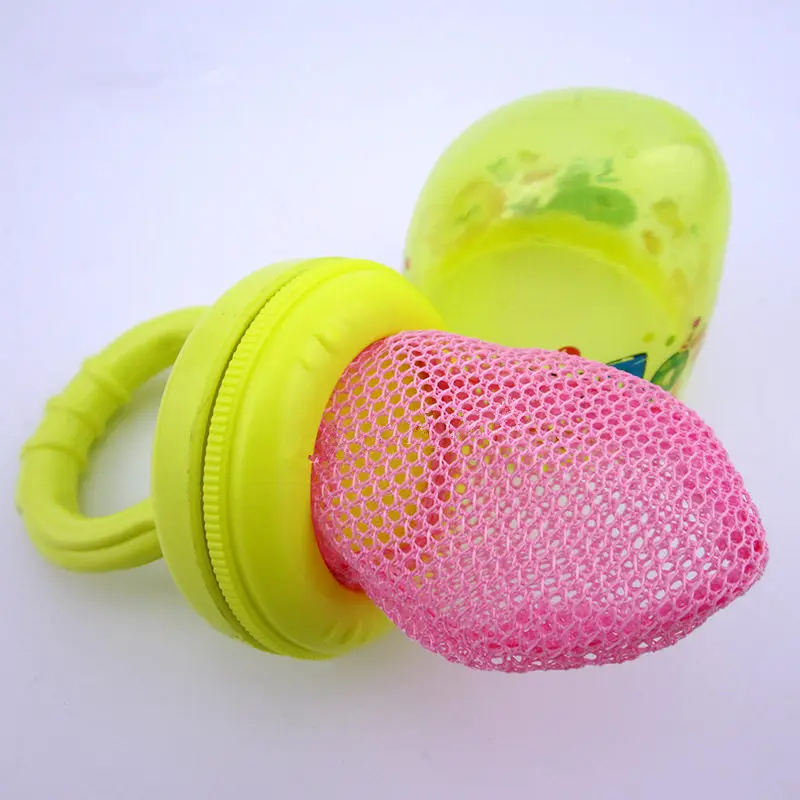 But why choose a feeder pacifier? Check out these benefits!
But why choose a feeder pacifier? Check out these benefits!
Helps the transition from breast/formula feeding to solids
Babies are used to suckling as they feed on breastmilk or formula milk. A pacifier can help them transition from suckling to slowly eating solids. These pacifiers are designed with multiple holes allowing babies to suckle on juices and eat fresh fruit or vegetables.
Allows your baby to experience flavors
Feeding through a pacifier also introduces different flavors without risking your baby making a mess by spitting up food they do not like. Add grapes, apples, bananas, potatoes, mangoes, and sweet potatoes! When your little one begins eating full meals, they’ll surely recognize the flavors.
Provides safety when eating
Choking is one of the worries of parents like you. Babies put anything they hold into their mouths, including food. The design of baby feeder pacifiers only allows small bits of food to pass through, keeping this hazard at bay.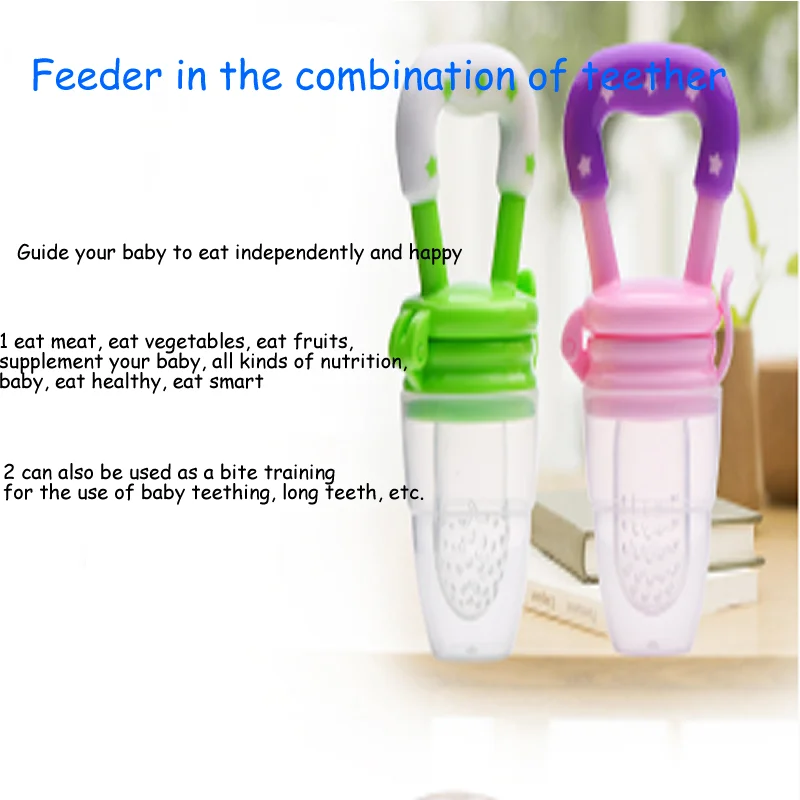
Eases teething
Aside from food safety, feeding pacifiers also fulfill the purpose of baby teethers. You can add frozen food inside the pacifier, which helps ease the pain teething babies experience. The friction in chewing the silicone nipple helps alleviate your baby’s discomfort. There are also baby food feeder pacifiers that are teether-friendly. The handles have holes where you can attach the teether, so your little one can have another toy to bite and chew on.
Can keep babies busy
Babies are filled with energy. Suppose you are eating together and are done feeding them their meals; chances are they may become fussy and want to leave their high chairs. Let them suckle on frozen fruit or dessert inside a food pacifier to keep them busy while you finish your meal.
Encourages feeding independence
Allowing your baby to hold onto their food and feed themselves even in this simple way of using a feeder pacifier encourages independence. This method is way better than spoon feeding them. As they grow, introduce new utensils to them and guide them on their proper use.
This method is way better than spoon feeding them. As they grow, introduce new utensils to them and guide them on their proper use.
Do the benefits of feeder pacifiers sound enticing? If you think this feeding tool is suitable for your little one and want them to reap its benefits, you can try it. Here’s how to use it and a few reminders to make the most of it to help your baby’s development.
Step by Step Guide
- Prepare your choice of solid food. You can puree fruits and vegetables and freeze them before putting them in the pacifier. You can also put in some yogurt and other mashed treats.
- Put your choice of food in the pacifier and keep the seal tight. Ensure your baby cannot open it to avoid the risk of choking.
- Let your baby independently feed on the pacifier and enjoy the treat.
- After suckling, remove the remaining food.

- Clean the pacifier using soap and warm water, and let it dry.
A Few Reminders
- Not wasting food is a good practice to teach to your child, but saving leftovers inside the pacifier shouldn’t be one of them. Letting the leftovers stay inside the pacifier can cause bacteria to form, which may make your baby sick.
- Although pacifiers can keep your baby busy, do not let this be their activity to fight boredom during their free time. This keeps them from doing more productive activities, and can teach them bad habits.
- Plan when you’ll wean your baby from using a pacifier feeder. This feeder is best for introducing food, but you should also begin introducing bowls, spoons, forks, and other utensils to them too.
- Although a baby food feeder has food inside, it shouldn’t be your baby’s main meal. It can be used for snacks or desserts, but you still need to prepare a full meal for them.
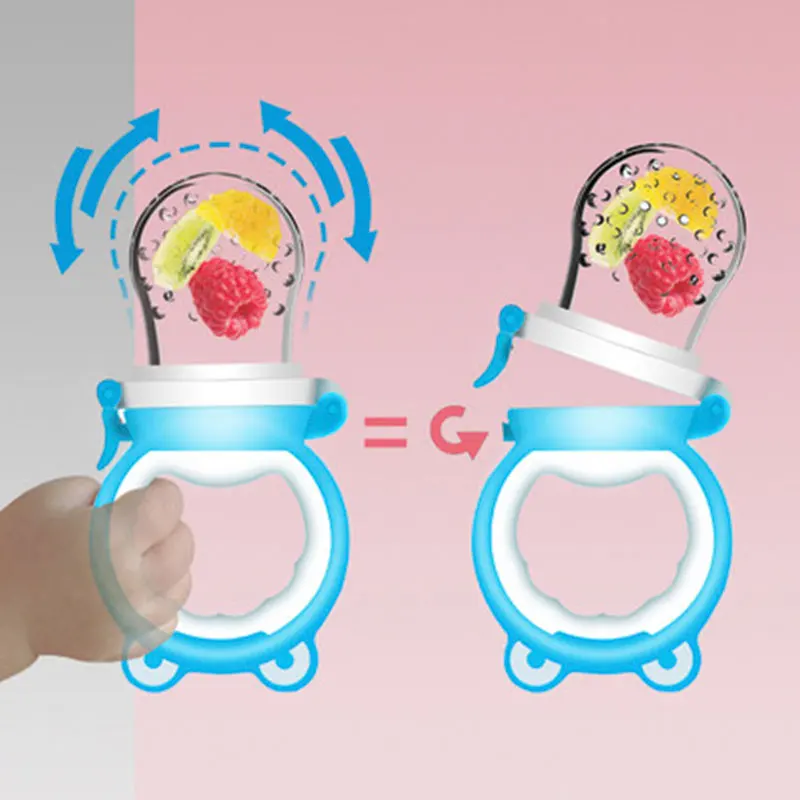
When out in the market to scout and purchase food pacifiers, you’ll notice that they come in different designs. Some fruit pacifiers mimic the look of a regular pacifier but are bigger and have more holes. Some are made with a mesh feeder instead of silicone nipples. These designs allow food to go through the gaps.
Despite the different designs, these general characteristics make a food-grade fruit feeder pacifier a great choice:
- Free from BPA, phthalates, formaldehyde, and other chemicals harmful for babies.
- Has just the right hole size for small food portions to pass through.
- Has a baby-friendly color or design to encourage babies to use it.
- Easy to clean.
You may initially go through trial and error and purchase two or more pacifiers—this is normal. What matters is you get the food pacifier that fits your little one best.
So there you have it, our comprehensive guide to starting your baby on solids using a fruit feeder pacifier. We hope that you found this information helpful, and that it has eased some concerns you may have about transitioning from breast milk or formula feeding to solids. Remember, start with simple fruits like banana, apple, or pear and watch for signs of readiness before trying anything more adventurous. Don’t forget, Ashtonbee’s baby fruit feeder pacifiers make starting your little one on solids easier and more fun! Check it out, and get one now!
» Choosing the right sieve for preparing baby food
As soon as the baby is 4 months old, every mother begins to think about complementary foods. She is worried about what to give the baby and, of course, how to properly prepare baby food. Only a pediatrician can answer the question about the procedure for introducing new foods into a child's diet.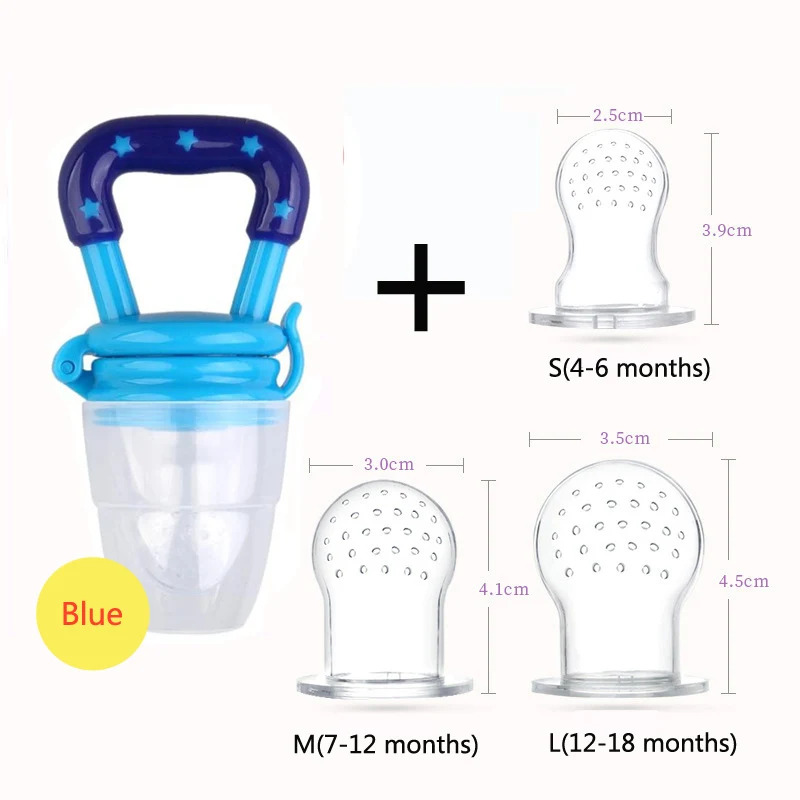 Some children are recommended to start with cereals, while others are more suitable for fruit or vegetable purees.
Some children are recommended to start with cereals, while others are more suitable for fruit or vegetable purees.
Whatever the food, it must be thoroughly crushed. Only in this case it will be convenient for the little man to swallow, and his stomach to easily digest a new product. nine0005
The use of a sieve is recommended to obtain a uniform texture, as even a good blender can leave small pieces of food. Consider what kind of colanders, sieves can be used to prepare baby food and how much they cost.
A sieve mug will make a perfect baby porridge
There are a lot of boxes with different baby porridges in stores. But not all mothers are in a hurry to buy them. And the point is not even the cost of mixtures, but the desire to know exactly what and what quality their crumbs eat. nine0003
For those who decide to cook porridges from real grains, the Peterhof PH-12709 sieve mug, which can be purchased for 5-6 dollars, will be very useful.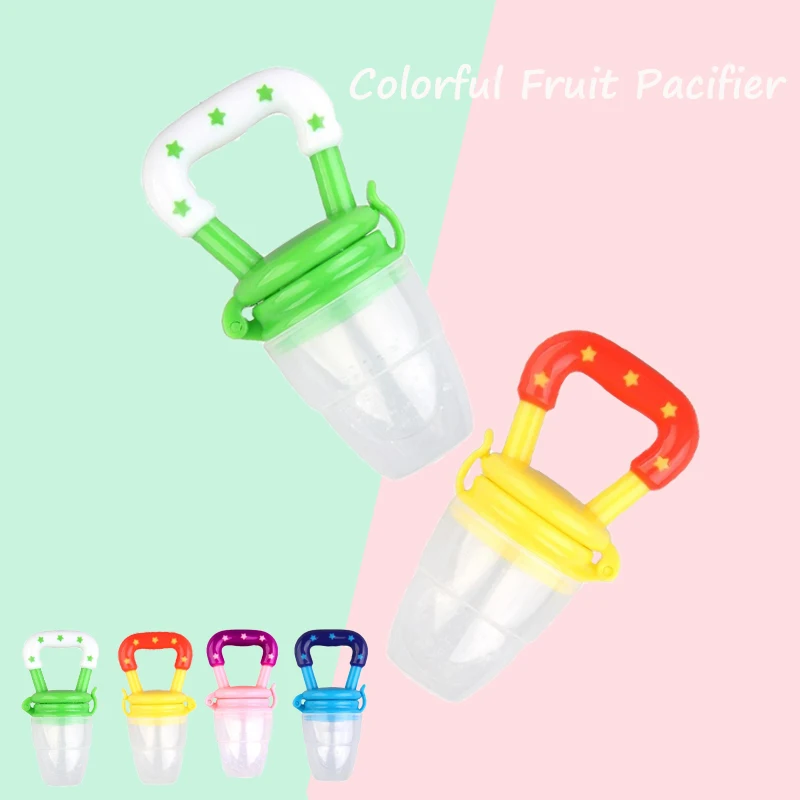 A small strainer and a convenient lever of this kitchen gadget allow you to quickly sift the cereals previously ground in a coffee grinder. The mug helps to make perfect flour from buckwheat, rice or other grain. The porridge prepared from it can be given to the baby not only from a spoon, but also poured into a bottle, diluted with milk.
A small strainer and a convenient lever of this kitchen gadget allow you to quickly sift the cereals previously ground in a coffee grinder. The mug helps to make perfect flour from buckwheat, rice or other grain. The porridge prepared from it can be given to the baby not only from a spoon, but also poured into a bottle, diluted with milk.
What should be the puree sieve
In contact with metal, vitamin C found in fruits and vegetables is partially destroyed. Other valuable components contained in products can also be oxidized. That is why it is recommended to wipe vegetables and fruits through a sieve made of high-quality food-grade plastic. It's just that it's hard to find it. For example, for $ 3 you can buy a bright plastic sieve Maestro MR-1164. It consists of a glass and a thin strainer, through which it is convenient to strain freshly squeezed juice, but it definitely will not withstand daily mashing. Most of the proposed plastic models have too large holes and are more like colanders.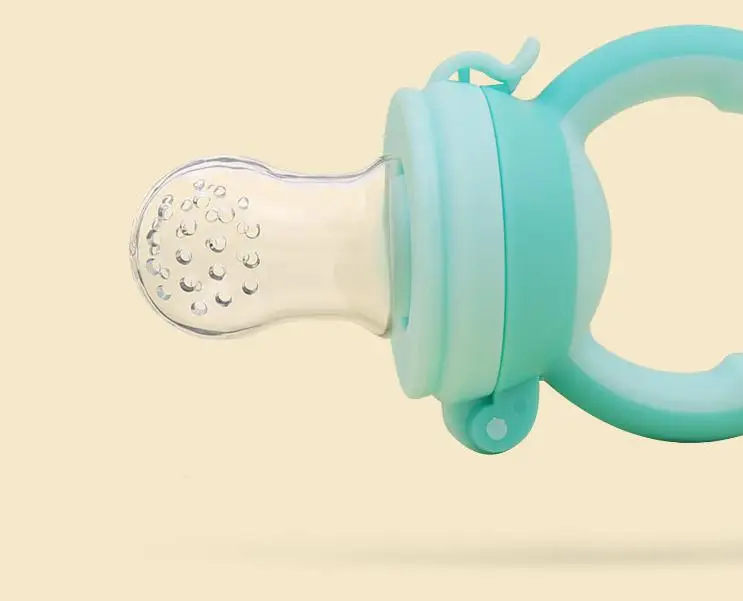 nine0003
nine0003
Not finding a good plastic sieve, mothers choose a quality stainless steel model and try to wipe vegetables and fruits as quickly as possible. This minimizes vitamin C losses.
Standard stainless steel sieves are available from many manufacturers, but only Westmark has developed an accessory specifically for pureeing. Her model is 1198-2260, which can be bought for $30, has a large diameter (20 cm), convenient pot holders, a rotating mechanism for rubbing vegetables, fruits, berries, as well as boiled meat and fish. With it, you will definitely be able to cook mashed potatoes very quickly.
Screen prices can seem quite high. However, many mothers are willing to pay for the confidence that they are made of real stainless steel, and not from an alloy based on harmful aluminum. In addition, a high-quality sieve will last a long time, allowing you to delight a little fidget with delicious purees for many years. nine0003
nine0003
More articles on this topic:
November 30, 2016
Category Interesting reading
Zucchini puree for the first feeding
The introduction of zucchini in the first feeding is recommended by WHO, and zucchini puree for baby food can be prepared without any problems yourself. There is nothing complicated in growing zucchini and the mature fruits of many varieties can be stored throughout the entire frosty period. The pulp of the fruit with elementary heat treatment retains its beneficial properties and is easily absorbed by the child's body even from an early age. nine0003
Contents
- How to cook courgettes for the first meal
- Courgettes for complementary foods in baby food
- Composition of marrow
- Benefits of zucchini for children and adults
How to prepare zucchini for the first feeding
If you decide to start feeding your baby, start with zucchini. It will be the best addition to breast milk or adapted formula. Zucchini is a hypoallergenic product and contains a large amount of nutrients needed by the child. nine0003
It will be the best addition to breast milk or adapted formula. Zucchini is a hypoallergenic product and contains a large amount of nutrients needed by the child. nine0003
Zucchini puree recipe
Cooking zucchini puree for the first feeding at home. Of the ingredients you need only zucchini and water. Let's start by rinsing the zucchini under cool running water. Peel off the skin and cut into cubes. Next 2 options. Either put it in boiling water, cook the zucchini for 6-10 minutes, while retaining the benefits of vitamin C. Or steam it, which will undoubtedly be tastier and healthier. Then we wipe through a sieve or grind with a blender. nine0003
You need to start complementary foods with one teaspoon, gradually day after day, increasing the number of spoons. It is important to introduce your child to this product at a very young age. When the child grows up, he will also need nutrients. And you can spoil him with many different zucchini dishes.
How to cook zucchini correctly and how much
For the first feeding, it is recommended to boil zucchini for up to 10 minutes. Usually this time is enough to soften the cut pieces. Do not forget that the longer the heat treatment of the vegetable takes place, the less vitamins and useful trace elements remain. Then everything is thoroughly crushed into puree and the first complementary foods are ready. Depending on the period of introduction of the puree to the baby, you can add a little vegetable oil to the puree if the mass of the portion of the puree has reached 100 g (usually on the 6th-7th day of feeding). nine0003
Usually this time is enough to soften the cut pieces. Do not forget that the longer the heat treatment of the vegetable takes place, the less vitamins and useful trace elements remain. Then everything is thoroughly crushed into puree and the first complementary foods are ready. Depending on the period of introduction of the puree to the baby, you can add a little vegetable oil to the puree if the mass of the portion of the puree has reached 100 g (usually on the 6th-7th day of feeding). nine0003
For the preparation of mashed potatoes, babies need to select only young and fresh zucchini fruits: without rot, cracks and dents. The fruit is thoroughly washed under running water. Then its lateral parts are cut off: the tail and the “butt”; peel is removed. The zucchini is cut lengthwise into several parts, from which the central soft part with seeds is removed. The remaining parts are cut into cubes. If the vegetable is bought at the market or in a store, it is recommended to soak the zucchini in clean water for about 2 hours to remove unnatural trace elements from the fruit in the form of fertilizers and pesticides.![]() nine0003
nine0003
How to freeze and defrost zucchini? Cooked cut fruit cubes in the right amount are placed in plastic bags or containers, and then in the refrigerator. For the preparation of frozen fruit puree, it is recommended to use a defrosted vegetable. To speed up the process, bags or containers with zucchini are placed in water at room temperature or under running tap water. After 1-2 hours, you can start cooking according to a known scheme.
Squash for complementary foods in baby food
Squash is widely used in baby food for its unique properties. In addition, vegetable squash purees are considered the most popular when introducing the first complementary foods to a child. One-component zucchini puree manufacturers recommend using for children from 4 months.
Table of the introduction of the first complementary foods with zucchini according to WHO recommendations
Baby food recommended for the first feeding includes Heinz zucchini puree, which additionally includes corn flour and water.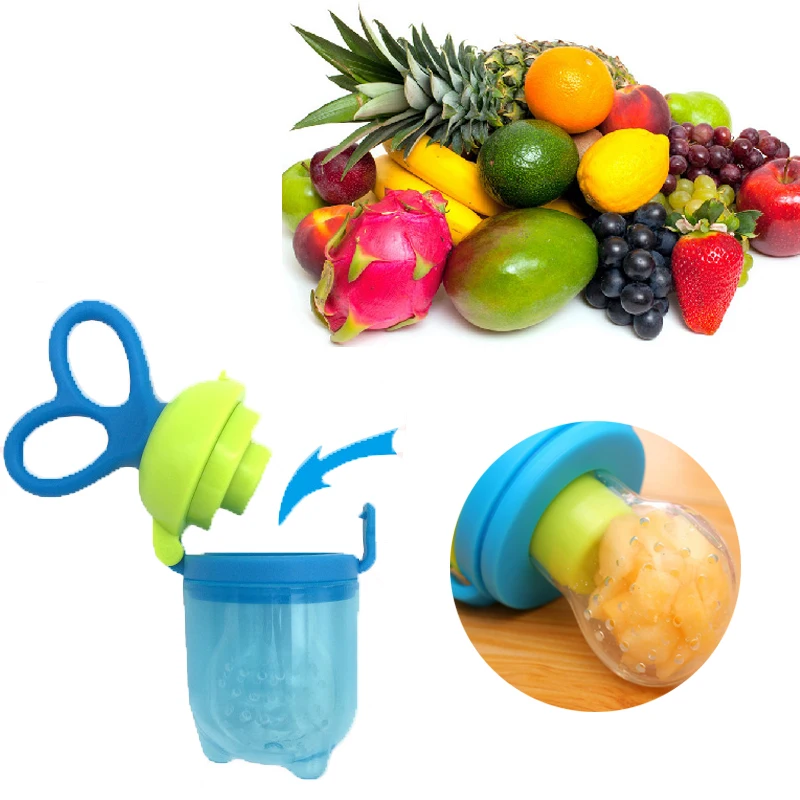 A similar product is Hipp zucchini puree, which contains coarse rice flour. These products are sold in glass jars with a net weight of 80 grams, and the puree contains no salt, sugar, starch, preservatives or dyes. nine0003
A similar product is Hipp zucchini puree, which contains coarse rice flour. These products are sold in glass jars with a net weight of 80 grams, and the puree contains no salt, sugar, starch, preservatives or dyes. nine0003
At a later age, in baby food, zucchini is used with vegetables, fruits, cereals and meat. For children over 5 months:
- Frutonyanya Broccoli and Zucchini Puree
- Puree Frutonyanya zucchini and potatoes
- Frutonyanya puree cauliflower and zucchini
- Puree Frutonyanya apples and zucchini
- Frutonyanya zucchini-oatmeal puree
- Gerber Potato and Zucchini Puree
- Puree Gerber apples and zucchini
Children's puree Tyoma beef with zucchini is recommended to try not earlier than 6 months from birth.
Ingredients of zucchini
Zucchini is a source of substances that have a beneficial effect on digestion. They contain a small amount of calories when cooked (20 to 25 kcal per 100 grams), so you can use them in food during therapeutic diets.



